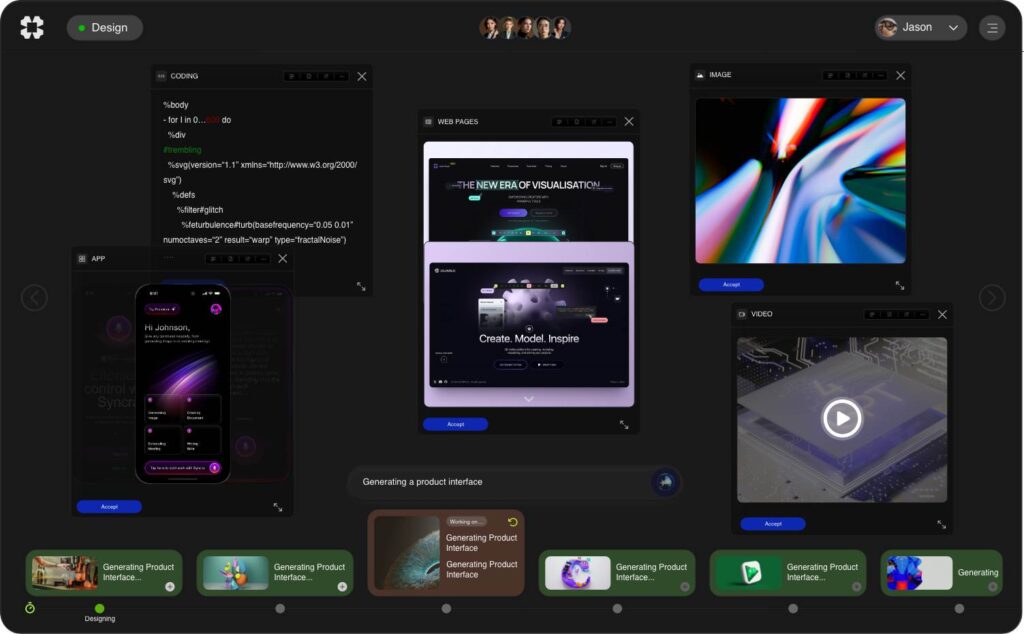In recent years, there has been a significant shift towards integrating artificial intelligence (AI) into numerous sectors, focusing on enhancing efficiency, reducing latency, and optimizing workflows. Central to this transformation are edge AI-powered devices, which process data closer to its source rather than relying solely on cloud-based systems. Additionally, the advances in AI model training, including efforts by initiatives like EleutherAI, are pushing the boundaries of what these devices can accomplish. This article will provide insights into how these technologies are reshaping industries.
Understanding Edge AI: What Is It?
Edge AI refers to the deployment of AI algorithms on local devices and systems, enabling processing and decision-making at the point of data generation. This capability reduces the need for data to travel to centralized servers for processing, resulting in faster insights and decreased latency.
The Benefits of Edge AI
- Speed: By processing data locally, edge AI allows for near-instantaneous decision-making.
- Bandwidth Efficiency: Reduces the amount of data being transferred to the cloud, saving bandwidth and costs.
- Security and Privacy: Sensitive data can be processed on-device, minimizing exposure and enhancing user privacy.
- Reliability: Edge devices can operate even when internet connectivity is intermittent or unavailable.
The Role of EleutherAI in Model Training
EleutherAI is renowned for its open-source approach to AI development, particularly in creating large language models similar to those by OpenAI. Since its inception, EleutherAI has focused on democratizing access to advanced AI tools, fostering a community-driven environment for innovation.
Key Contributions to AI Training
- GPT-Neo and GPT-J: Leveraging the community’s efforts, these models have become benchmarks in the open-source AI landscape, facilitating enhanced model training.
- Transparency: Through open discussions surrounding AI ethics and biases, EleutherAI promotes the responsible use of AI technologies.
- Accessibility: By providing access to powerful models, companies of all sizes can implement AI solutions without the typical financial barriers.
The Impact of Edge AI on Workflow Optimization
Many organizations are harnessing the power of edge AI to streamline their operations and enhance workflow efficiency. The deployment of these technologies leads to significant productivity gains and cost savings.
Real-World Applications
Let’s explore a few sectors where edge AI-powered devices are making a substantial impact on workflows.

1. Manufacturing
Edge AI is revolutionizing the manufacturing sector by enabling predictive maintenance, real-time monitoring, and quality control. By utilizing edge devices with built-in AI capabilities, factories can analyze data from machinery, predict failures before they occur, and optimize production schedules accordingly.
2. Healthcare
In healthcare, edge AI can assist in patient monitoring, diagnostic imaging, and operational efficiency. Devices that analyze health data from patients in real time can trigger alerts for healthcare providers if anomalies are detected.
3. Retail
AI-driven edge devices in retail assist in inventory management and customer behavior analysis. Smart shelves equipped with sensors can track product availability, while cameras and AI algorithms can analyze shopper patterns to enhance layout and stock decisions.
Case Study: Smart Cities
One notable example of edge AI implementation is in the development of smart cities.
Cities like Singapore employ numerous sensors and cameras to gather data on traffic, air quality, and other urban metrics.By utilizing edge AI to analyze these data streams, city planners can make data-driven decisions in real-time, improving overall urban management and enhancing residents’ quality of life.
Technical Insights for Developers
For developers looking to dive into edge AI application development, there are several tools and frameworks available to facilitate model deployment on edge devices.
Key Tools and Frameworks
- TensorFlow Lite: A lightweight deployment of TensorFlow for mobile and embedded devices.
- OpenVINO: An Intel toolkit for optimizing deep learning models for Intel hardware.
- Edge Impulse: A platform specifically designed for developing machine learning models for edge devices.
Getting Started: A Basic Code Example
Here’s a simple example of using TensorFlow Lite for an image classification task on an edge device:
import tensorflow as tf
# Load the TFLite model and allocate tensors.
interpreter = tf.lite.Interpreter(model_path="model.tflite")
interpreter.allocate_tensors()
# Get input and output tensors.
input_details = interpreter.get_input_details()
output_details = interpreter.get_output_details()
# Load an image and preprocess it.
image = load_and_preprocess_image("image.jpg")
# Set the tensor to the input image.
interpreter.set_tensor(input_details[0]['index'], image)
# Run inference.
interpreter.invoke()
# Get the result.
output_data = interpreter.get_tensor(output_details[0]['index'])
Industry Trends and Future Outlook
The edge AI market is anticipated to experience significant growth, with increasing investments and advancements in machine learning. As organizations prioritize real-time data analysis and workflow optimization, edge AI is expected to play a vital role in shaping the future of various industries.
Anticipated Developments
- Integration with 5G technology to enhance connectivity and efficiency.
- Greater focus on developing energy-efficient AI models for edge devices.
- Increased collaboration between AI communities, like EleutherAI, and enterprises to foster innovation.
In conclusion, edge AI-powered devices and advancements in model training are set to significantly transform how organizations approach workflow optimization. With immediate data processing, lower latency, and improved decision-making, edge AI is not just a technological advancement; it is the future of how industries will operate.
